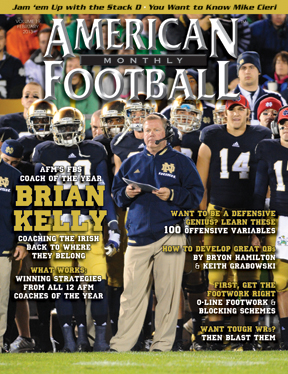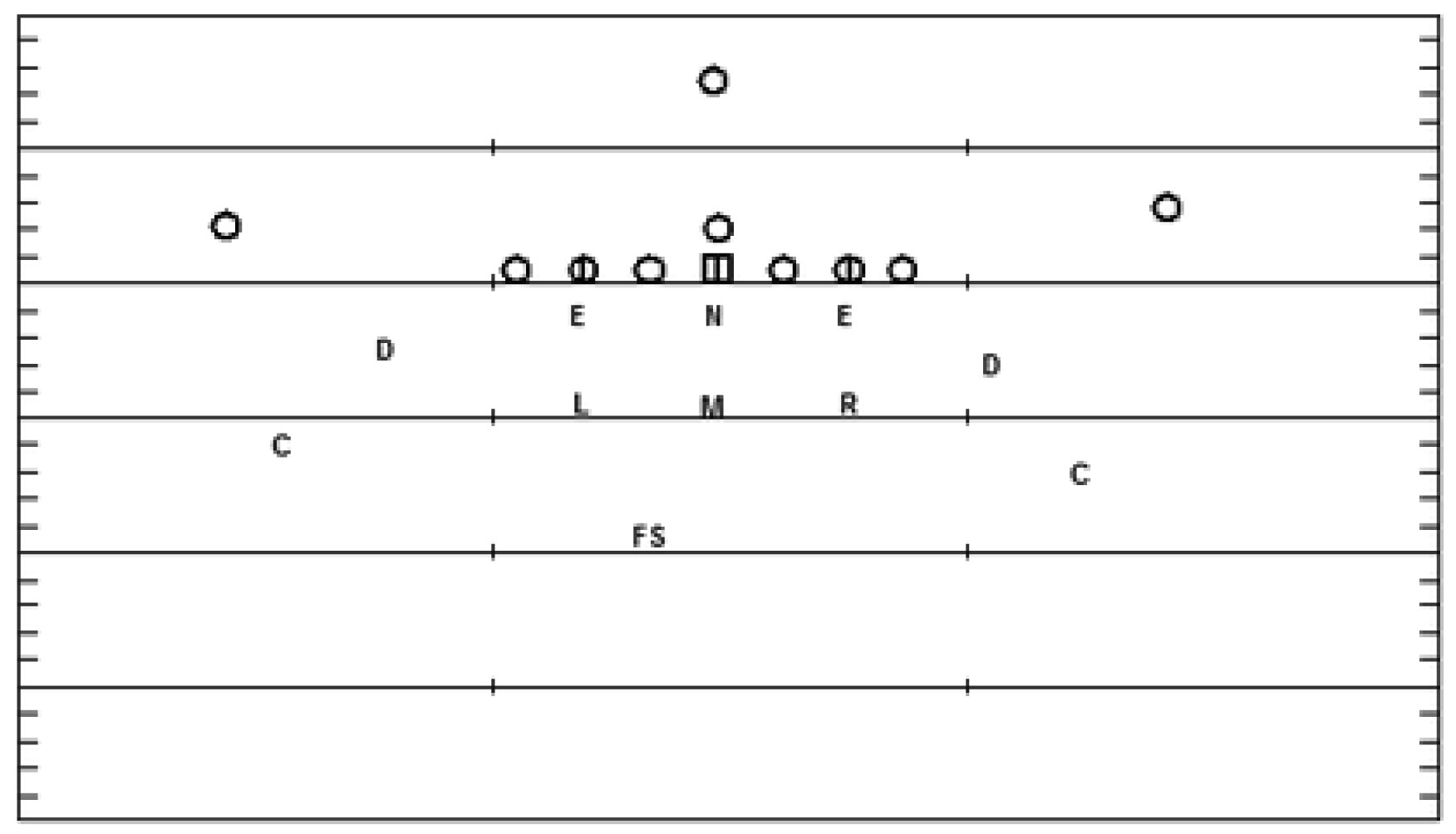AMERICAN FOOTBALL MONTHLY THE #1 RESOURCE FOR FOOTBALL COACHES
Article CategoriesAFM Magazine
|
Defending the Power Game with the Stack Defense – The stack defense allows players to be aggressive and limit adjustments against either a spread or a power offense.by: Matt McCartyDefensive Coordinator, Northwestern College (IA) © More from this issue One of the primary benefits of the stack defense is its ability to line up against any style of offense and be very effective. With the emergence of the spread offense, the stack gives defenses a great opportunity to not only match up with the spread but also attack it. While this is a great benefit, the primary strength of the stack defense is its ability to stop the run. Throughout the course of a season, we will defend shotgun-spread offenses mainly running out of 10 and 11 personnel as well as double-tight end 12 personnel offenses. The stack, especially the 3-5 version that we run, is a great defense against the power running game. There are several reasons we run the stack the way we do (Diagram 1):
| 
|
Subscribe now to start receiving our monthly magazine PLUS get INSTANT unlimited access to over 4000 pages of 100 percent football coaching information, ONLY available at AmericanFootballMonthly.com! | |||
NEED PASSWORD HELP |





